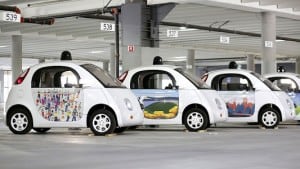 IHS Automotive released a new report that shows how autonomous cars with software from Google and rides-share (car-as-service) companies like Uber and Lyft will influence car developments and consumer choices in the future.
IHS Automotive released a new report that shows how autonomous cars with software from Google and rides-share (car-as-service) companies like Uber and Lyft will influence car developments and consumer choices in the future.
Currently automakers are using evolutionary methods for ADAS that eventually lead to self-driving features, notes the report, while Google is revolutionary and will affect the car transportation business.
Google has spent a lot of money ($60 million so far at $30 million a year) for software to interpret the sensors and learn to drive. Google uses similar technology from other research areas such as robotics and drones as well as artificial intelligence (AI), machine learning and machine vision. When automakers such as Toyota see what Google is doing, then they follow such as Toyota’s AI research Center with a $1 billion, five-year investment, notes the report.
IHS analysis reports that Google’s self-driving software is performing better than nearly all drivers in the vast majority of traditional driving situations in good weather except for extreme unpredictable events such as extreme weather, strange roads, exceptional traffic and other unexpected conditions.
It looks like Google’s goal is to offer software and services for transportation by fleets of driverless cars within ten years. That’s when a car-as-a-service approach may be a significant opportunity.Car-as-a-service (CaaS) is the new freeway of urban transportation. CaaS is car sharing, with cars but without the people. IHS Automotive analysts believe Google is currently developing the software and maps that can be the basis for driverless vehicles in five years or so.